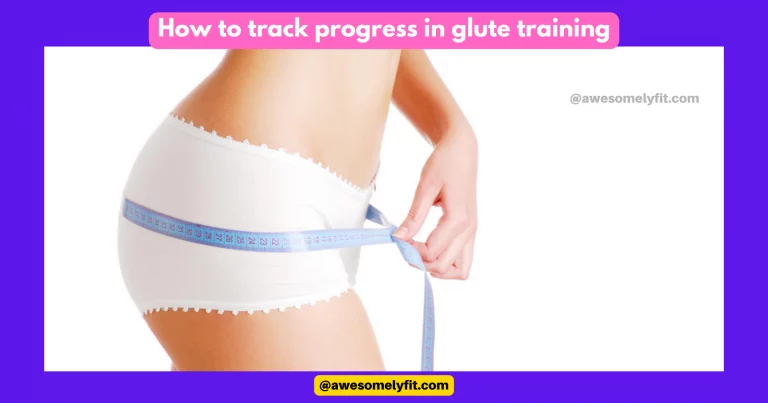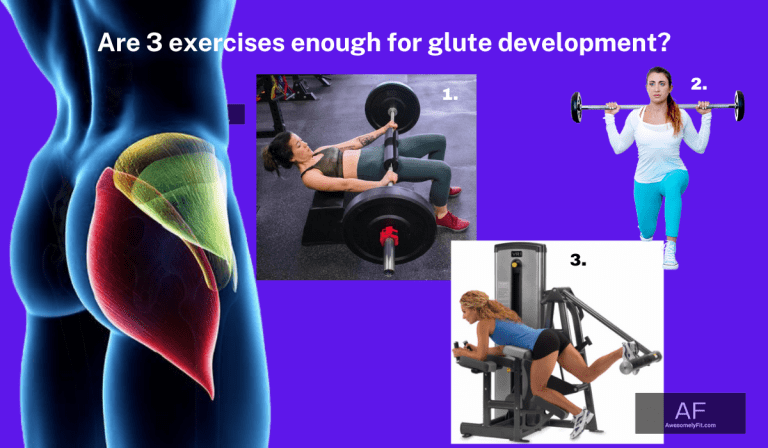How Much Protein to Build Glutes: Optimal Intake for Growth
Have you ever wondered how long it takes to build your glutes? Well, let’s cut to the chase and get straight to the facts. Building glutes is no walk in the park; it takes time, consistency, and a whole lot of effort. But how long exactly? The truth is, there’s no one-size-fits-all answer. It all depends on various factors like genetics, individual effort, and other personal aspects that influence your glute growth journey.
Patience becomes your greatest ally when aiming for massive glute growth. You won’t see results overnight or in a matter of seconds. Instead, think in terms of weeks and months rather than days or hours. While some lucky individuals may experience noticeable changes within weeks, others might take longer to witness significant improvements in their hip circumference or overall glute appearance.
Remember this: building your dream derriere requires dedication and enough time for those muscles to grow stronger. So buckle up, find your preferred stance width during workouts, and give yourself the time needed to achieve those booty gains you desire.
Factors Affecting Glute Growth: Protein and Calorie Intake
Consuming Enough Protein for Muscle Repair and Growth
To build your glutes effectively, it’s crucial to consume enough protein in your diet. Protein is the building block of muscles, and without an adequate intake, your glute growth may be hindered. When you engage in weightlifting or other resistance exercises, tiny tears occur in your muscle fibers. These tears need to be repaired and rebuilt stronger than before, which requires protein.
To ensure optimal muscle growth, aim for a daily protein intake of around 0.8-1 gram per pound of body weight. For example, if you weigh 150 pounds, try to consume between 120-150 grams of protein each day. You can incorporate various sources of protein into your diet, such as lean meats like chicken and turkey, fish like salmon or tuna, eggs, dairy products like Greek yogurt or cottage cheese, legumes like lentils or chickpeas, and plant-based options like tofu or tempeh.
Caloric Surplus: Fueling Glute Development
Building your glutes also requires providing them with sufficient energy through a caloric surplus. This means consuming more calories than you burn throughout the day. The surplus provides the necessary fuel for intense workouts that target your glute muscles directly.
While it’s important to maintain a balanced diet overall, being in a slight caloric surplus can support muscle growth by ensuring you have enough energy for both exercise and recovery. However, it’s essential to strike a balance; too much excess calories can lead to unwanted fat gain instead of lean muscle development.
Balancing Macronutrients: Optimizing Muscle-Building Potential
In addition to meeting your protein needs and maintaining a caloric surplus for glute growth, balancing macronutrients plays a vital role in optimizing muscle-building potential. Macronutrients refer to carbohydrates, proteins, and fats. Each of these nutrients serves a specific purpose in your body’s functioning.
Carbohydrates provide energy for your workouts and aid in muscle recovery. They are the primary fuel source during intense exercise. Including complex carbohydrates like whole grains, fruits, and vegetables in your diet ensures a steady release of energy throughout the day.
Fats are essential for hormone production and overall health. Incorporating healthy fats from sources like avocados, nuts, seeds, and olive oil can support optimal glute growth.
To ensure you’re getting the right balance of macronutrients for muscle growth, consider following these guidelines:
- Protein: Aim for 0.8-1 gram per pound of body weight.
- Carbohydrates: Consume complex carbs from whole grains, fruits, and vegetables.
- Fats: Include healthy fats from avocados, nuts, seeds, and olive oil.
By focusing on protein intake to repair and grow muscles, maintaining a caloric surplus to fuel workouts effectively, and balancing macronutrients to optimize muscle-building potential, you can enhance glute growth over time.
Accelerating Glute Growth: Effective Exercises and Variations
Compound Exercises for Engaging Multiple Muscles
Compound exercises are a key component of any glute-building routine. These movements engage multiple muscles simultaneously, including the glutes, which helps to stimulate growth and strength. Two compound exercises that are particularly effective for targeting the glutes are squats and deadlifts.
Squats: This classic exercise is a powerhouse. As you lower yourself into a squat, your glutes work hard to stabilize your body and then propel you back up. To maximize the activation of your glutes during squats, focus on sitting back into your heels and pushing through them as you rise.
Deadlifts: Deadlifts are another fantastic compound exercise that engages the glutes along with several other muscle groups. As you lift the weight off the ground, your glutes contract to extend your hips and bring you to an upright position. Make sure to maintain proper form throughout the movement by keeping your back straight and hinging at the hips.
Incorporating Variations for Targeted Glute Activation
While compound exercises like squats and deadlifts effectively engage the entire glute complex, incorporating variations into your routine can help target specific areas of your glutes for even better results.
Lunges: Lunges are an excellent variation that targets both the front and back of your thighs while also engaging your glutes. Whether you choose forward lunges or reverse lunges, this exercise challenges different muscle fibers in your glutes, promoting balanced growth.
Hip Thrusts: Hip thrusts specifically target horizontal hip extension, making them a great exercise for building strong and shapely glutes. Performing hip thrusts involves lying on your back with knees bent and feet flat on the ground, then driving through your heels to lift your hips off the floor. Squeeze those glutes at the top of the movement for maximum activation.
Progressive Overload for Optimal Glute Stimulation
To see significant growth in your glutes, it’s essential to incorporate progressive overload into your training routine. Progressive overload involves gradually increasing the weight or intensity of your exercises over time to continually challenge and stimulate your muscles.
Increase Weight: As you become comfortable with a particular exercise, gradually increase the weight you’re lifting. This added resistance forces your glutes to adapt and grow stronger.
Intensify Reps and Sets: Another way to apply progressive overload is by increasing the number of reps or sets you perform during each workout. Pushing yourself to do more than before helps create the stimulus necessary for muscle growth.
Common Mistakes Hindering Glute Growth: Exercise Selection and Technique
Neglecting compound movements limits overall glute stimulation.
If you’re aiming to build your glutes, it’s essential to incorporate compound movements into your workout routine. Compound exercises engage multiple muscle groups simultaneously, including the glutes. Neglecting these movements can limit overall glute stimulation and hinder your progress.
One of the best compound exercises for targeting the glutes is the back squat. This exercise not only works your quadriceps and hamstrings but also places a significant load on your glute muscles. By incorporating back squats into your routine, you’ll ensure that you’re effectively stimulating your glutes for optimal growth.
Other compound exercises that target the glutes include deadlifts, lunges, and hip thrusts. These movements engage multiple muscles in the lower body, providing a comprehensive workout for your glutes. Incorporating a variety of compound exercises will help you achieve well-rounded glute development.
Poor exercise technique reduces effectiveness and may lead to injury.
Exercise technique plays a crucial role in maximizing the effectiveness of your workouts while minimizing the risk of injury.Using proper form is essential.
For example, when performing squats or lunges, it’s important to maintain proper alignment by keeping your knees in line with your toes and avoiding excessive forward lean. This ensures that you’re engaging the correct muscles and placing adequate stress on the glutes.
Focusing on mind-muscle connection can greatly enhance exercise effectiveness. By actively engaging and squeezing the glute muscles during each rep, you’ll maximize their activation and stimulate more growth.
It’s also crucial to avoid using momentum or relying solely on weights that are too heavy for proper form. Doing so not only reduces the effectiveness of the exercise but also increases the risk of injury. Always prioritize quality over quantity.
Focusing solely on cardio can hinder muscle development in the glutes.
While cardiovascular exercise is important for overall health and fitness, relying solely on cardio can hinder muscle development in the glutes. Cardio exercises like running or cycling primarily target endurance rather than muscle growth.
To build your glutes effectively, it’s crucial to incorporate resistance training into your routine. Resistance exercises create tension in the muscles, stimulating growth and strength development. By incorporating both cardio and resistance training, you’ll achieve a well-rounded approach to building your glutes.
Incorporate exercises that specifically target the glute muscles, such as hip abductions or different types of lunges. These isolation exercises can help activate and strengthen the glute muscles further.
Remember, building strong glutes takes time and consistency. Don’t expect overnight results but stay committed to your workouts and proper technique. By incorporating compound movements, focusing on exercise technique, and balancing cardio with resistance training, you’ll be well on your way to achieving those desired glute gains!
Enhancing Glute Appearance: Tips for a Bigger-looking Butt
Wearing high-waisted pants accentuates the shape of your glutes.
One simple trick is to wear high-waisted pants. These pants sit higher on your waist, drawing attention to your glute area and accentuating their shape. High-waisted pants can create the illusion of a bigger butt by highlighting the curves and contours of your lower body.
To make the most of this tip, opt for pants that are snug around your waist and hips but have some stretch in the fabric. This will help lift and shape your glutes while providing comfort throughout the day. Choose colors and patterns that flatter your figure and draw attention to your backside.
Adding resistance bands to exercises intensifies glute activation during workouts.
If you’re looking to build up the size of your glutes, incorporating resistance bands into your workouts can be highly effective. Resistance bands add an extra challenge to traditional exercises like squats and lunges, increasing the intensity and targeting specific muscles in your glute region.
To get started, wrap a resistance band just above or below your knees before performing squats or lunges. The band creates resistance as you move, forcing your glute muscles to work harder. This added tension helps activate more muscle fibers in your buttocks, leading to greater growth over time.
In addition to squats and lunges, there are several other exercises you can try with resistance bands:
- Clamshells: Lie on one side with knees bent at a 90-degree angle. Place a band around both legs just above the knees. Keeping feet together, open and close legs like a clamshell.
- Glute bridges: Lie face-up with knees bent and feet flat on the ground. Wrap a band around both thighs just above the knees. Lift your hips off the ground, squeezing your glutes at the top of the movement.
- Donkey kicks: Start on all fours with a resistance band looped around one foot and held in both hands. Kick your leg back while keeping it bent, focusing on engaging your glutes.
Incorporating unilateral exercises helps correct imbalances and enhances symmetry.
Don’t forget about unilateral exercises. Unilateral exercises target each side of your body individually, helping to correct any imbalances between your left and right glutes. This not only improves overall symmetry but also ensures that both sides of your butt are equally engaged during workouts.
Some great unilateral exercises to incorporate into your routine include:
- Bulgarian split squats: Stand facing away from a bench or step with one foot resting on it behind you. Lower yourself into a lunge position, keeping most of the weight on your front leg. Push through the heel of your front foot to return to the starting position.
- Single-leg hip thrusts: Lie face-up with knees bent and feet flat on the ground.
Optimizing Training Routines: Compound Workouts and Rest Periods
Optimizing your training routine is key. By incorporating compound exercises and strategically planning rest periods, you can maximize muscle engagement and promote optimal growth.
Including compound exercises in your routine maximizes overall muscle engagement, including the glutes.
Compound exercises are multi-joint movements that engage multiple muscle groups simultaneously. These exercises not only target specific muscles but also recruit synergistic muscles to provide stability and support.Compound exercises are highly effective as they engage not only the gluteal muscles but also other lower body muscles such as quadriceps, hamstrings, and calves.
Some common compound exercises for building glutes include:
- Squats: Whether it’s a back squat or a front squat, squats are excellent for targeting the gluteal muscles. Aim for proper form by keeping your chest up, knees aligned with toes, and hips pushed back.
- Deadlifts: This exercise primarily targets the posterior chain, which includes the glutes. Ensure a neutral spine throughout the movement to avoid any strain on your lower back.
- Lunges: Walking lunges or stationary lunges can effectively work your glutes while also engaging other leg muscles. Focus on maintaining balance and control during each lunge.
By incorporating these compound exercises into your workout routine, you can ensure maximum activation of your gluteal muscles for optimal growth.
Allowing adequate rest periods between sets promotes recovery and prevents overtraining.
Rest periods play a crucial role in muscle recovery and growth. When you perform strength training exercises like those mentioned above, micro-tears occur in your muscle fibers. It is during rest that these tears repair themselves and become stronger than before.
To optimize your rest periods, consider the following guidelines:
- Shorter rest periods (30-60 seconds) are suitable for building endurance and cardiovascular fitness.
- Longer rest periods (1-3 minutes) are ideal for maximizing strength and muscle growth.
- Listen to your body and adjust rest periods based on how you feel. If you need more time to recover between sets, take it.
By allowing adequate rest between sets, you give your muscles enough time to recover, reducing the risk of overtraining and injury.
Varying training intensity with lighter days followed by heavier days stimulates continuous progress.
To keep challenging your glutes and stimulate continuous progress, it’s important to vary the intensity of your workouts. This can be achieved by incorporating lighter days followed by heavier days into your training program.
Here’s an example of a weekly routine that incorporates varying intensities:
- Day 1: Heavy leg day – Focus on compound exercises with higher weight and lower reps.
- Day 2: Light leg day – Incorporate exercises with lighter weights and higher reps to target muscular endurance.
Nutrition for Glute Growth: Balancing Diet and Caloric Intake
Eating a Balanced Diet for Muscle Growth
Nutrition plays a crucial role. Eating a balanced diet that is rich in whole foods is essential for providing your muscles with the necessary nutrients they need to grow. Incorporating a variety of fruits, vegetables, lean proteins, whole grains, and healthy fats into your meals ensures that your body receives the vitamins, minerals, and antioxidants it needs to support muscle development.
To fuel glute growth specifically, focus on consuming foods that are high in protein. Protein is the building block of muscles and helps repair and rebuild them after intense workouts. Include sources such as lean meats like chicken breast or turkey, fish like salmon or tuna, eggs, Greek yogurt, tofu, lentils, and legumes in your diet. These options provide ample amounts of protein while offering other beneficial nutrients as well.
Monitoring Caloric Intake for Glute Development
While eating enough calories is important for muscle growth, it’s also essential to strike the right balance. Consuming too few calories can hinder progress by preventing adequate muscle recovery and growth. On the other hand, excessive calorie intake may lead to unwanted weight gain.
To find the sweet spot for glute development without gaining excess body fat, aim for a slight caloric surplus. This means consuming slightly more calories than you burn throughout the day. It’s crucial to listen to your body’s energy needs and adjust accordingly.
Tracking Food Intake: The Key to Success
Tracking your food intake allows you to monitor whether you’re providing your body with enough fuel for muscle growth or if adjustments are needed. There are various methods available today that make tracking easier than ever before.
One popular approach is using calorie-tracking apps or websites that help you keep tabs on your daily caloric intake along with macronutrient breakdowns. These tools allow you to set goals and visualize your progress, making it easier to stay on track.
Another effective method is keeping a food diary. By writing down what you eat each day, you can become more mindful of your choices and identify any areas for improvement. Consulting with a registered dietitian or nutritionist can provide personalized guidance tailored to your specific needs.
Building a Sample Meal Plan for Glute Growth
To give you an idea of how to structure your meals for glute development, here’s a sample meal plan:
the meal plan emphasizes nutrient-dense foods that support glute growth and overall health.
It provides a balance of lean proteins, complex carbohydrates, healthy fats, and fiber-rich vegetables, ensuring you get the necessary nutrients to fuel your workouts and promote muscle development.
Remember to adjust portion sizes based on your individual needs and goals, and consult with a nutrition professional for personalized guidance.
Conclusion
To achieve optimal glute development, it is crucial to focus on several key factors. First and foremost, ensure that your protein and calorie intake is sufficient to support muscle growth. Adequate nutrition plays a vital role in building strong and shapely glutes.
In addition to proper nutrition, incorporating effective exercises and variations into your routine can accelerate glute growth. By targeting the glute muscles with compound movements and utilizing different exercise techniques, you can maximize your results.
Avoiding common mistakes in exercise selection and technique is another essential aspect of achieving desired glute development. Pay attention to form and ensure that you are targeting the correct muscles during each exercise.
If enhancing the appearance of your glutes is a goal, there are various tips that can help create the illusion of a bigger butt. These include wearing clothing that accentuates your curves, using specific posing techniques, or even considering padded undergarments if desired.
Optimizing your training routines by incorporating compound workouts and appropriate rest periods is also crucial for overall glute development. By engaging multiple muscle groups simultaneously and allowing adequate recovery time, you can stimulate maximum growth in your glutes.
Lastly, balancing your diet with caloric intake is essential for promoting glute growth. It’s important to find the right balance between consuming enough calories to fuel muscle growth while avoiding excessive weight gain.
In conclusion, building strong and well-developed glutes requires a combination of proper nutrition, effective exercises, avoiding common mistakes, enhancing appearance when desired, optimizing training routines, and maintaining a balanced diet. By focusing on these aspects consistently over time, you can achieve significant improvements in your glute development.
Now it’s time for you to take action! Implement these strategies into your fitness routine and start working towards achieving the glutes you desire. Remember to stay consistent and be patient as results may take time but will be worth it in the end!
FAQs
Q: Can I build my glutes without going to the gym?
A: While going to the gym provides access to a wide range of equipment and exercises, it is possible to build your glutes at home using bodyweight exercises or minimal equipment. However, incorporating resistance training with weights can often yield faster and more noticeable results.
Q: How long does it take to see results in glute development?
A: The timeline for seeing results in glute development can vary depending on various factors such as genetics, consistency in training, nutrition, and overall fitness level. With dedicated effort and adherence to a well-rounded routine, you may start noticing improvements within a few weeks to a couple of months.
Q: Do I need supplements for glute growth?
A: Supplements are not necessary for glute growth if you have a well-balanced diet that meets your nutritional needs. However, certain supplements like protein powder can be convenient for ensuring adequate protein intake if you struggle to meet your requirements through food alone.
Q: Can cardio help with glute development?
A: While cardiovascular exercise is beneficial for overall health and weight management, it may not directly contribute significantly to glute development. To specifically target the glutes, incorporating resistance training exercises that engage those muscles is more effective.
Q: Is it possible to overtrain the glutes?
A: Yes, overtraining any muscle group can impede progress and increase the risk of injury. It’s important to allow sufficient rest and recovery time between workouts targeting the glutes. Listen to your body’s signals and adjust your training frequency accordingly.
Q: Will building my glutes make my thighs bigger too?
A: Building your glutes through targeted exercise will likely result in some increase in thigh size as well since many exercises also engage the surrounding leg muscles. However, this increase should be proportional and contribute towards an overall balanced physique.
Q: Can women achieve significant glute development without getting bulky?
- A: Yes, women can achieve significant glute development without becoming bulky. With the right training program and nutrition, it is possible to build strong and shapely glutes while maintaining a lean and toned physique.

👋 I am Rakesh Sonawane, a personal trainer with around half a decade of working experience. I have been fortunate enough to have trained people from all walks of life.
I created this site to simplify the path of getting fit and healthy as the internet is filled with too complex and useless info.
My website content is well-planned, thought, and well-researched before being published on the site for you to read. Hopefully, you will enjoy my helpful, practical content.






